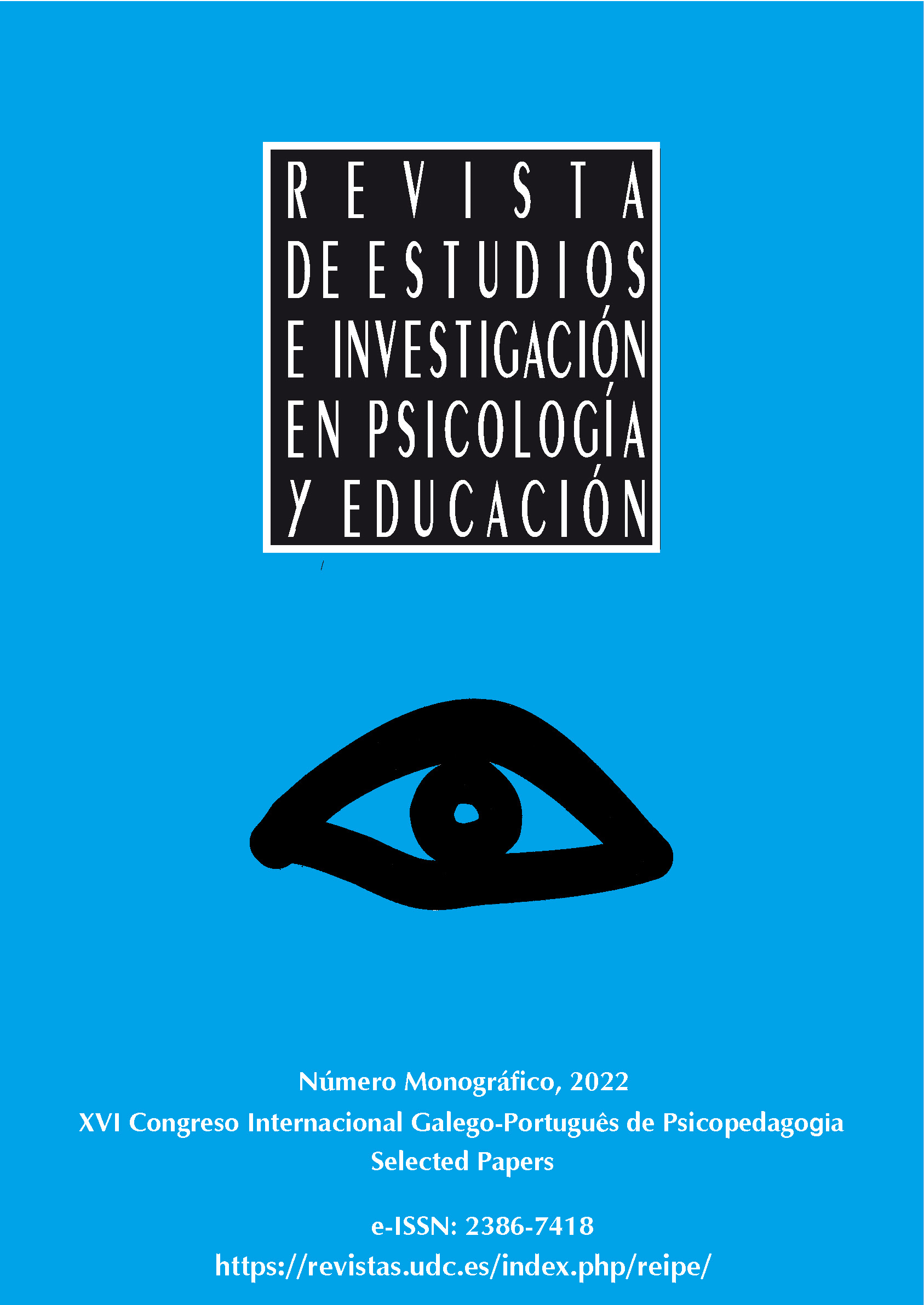Universal Design for Learning in the Teaching of Catholic Moral and Religious Education
Main Article Content
Abstract
In their teaching practice, the Catholic Moral and Religious Education (EMRC) teacher is faced with the requirement to articulate the Universal Design for Learning (UDL) and the spiral design of the subject curriculum, by Jerome Bruner. The main objective of this study is to deepen the pedagogical practices of EMRC teachers in the application of the UDL. The sample is composed by teachers of this curricular area in Portugal, totaling 181 participants. The results reveal that EMRC teachers are involved in building an inclusive school. Despite some similarities between a curricular conception of Jerome Bruner and the phases of involvement and representation of the UDL, the EMRC teachers surveyed have difficulties in including all of the UDL phases in their pedagogical practice, in particular, the expression, which suggests the need of continuous training in this area, as a way of promoting inclusive pedagogical practices.
Keywords:
Downloads
Article Details
References
Bergman, E., & Johnson, E. (1995). Toward Accessible Human-Computer Interatction. In J. Nielsen (Ed.), Advances in Human-Computer interaction. Ablex Publishing Corporation.
Bruner, J. (1960). The Process of Education. Harvard University Press.
Bruner, J. (1999). Para uma teoria da Educação. Relógio d’Água.
CAST. (2018). Universal design for learning guidelines version 2.2. The Universal Design for Learning Guidelines. CAST. https://udlguidelines.cast.org/
CAST. (2021). Universal Design for Learning Guidelines. About Universal Design for Learning. CAST. https://www.cast.org/impact/universal-design-for-learning-udl
Castillo, M., & Acuña, M. (2019). Desde el Diseño Universal para el Aprendizaje: el estudiantado al aprender se evalúa y al evaluarle aprende. Educación, 43(1), 2215-2644. https://doi.org/10.15517/revedu.v43i1.28449
Dinnebeil, L., Boat, M., & Bae, Y. (2013). Integrating principles of universal design into the early childhood curriculum. Dimensions of Early Childhood, 41(1), 3–13.
Giroto, C., Poker, R., & Omote, S. (2012). Educação Especial, formação de professores e o uso das Tecnologias da Informação e Comunicação: A construção de práticas pedagógicas inclusivas. In C. Giroto, R. Poker, & S. Omote (Eds.), As tecnologias nas práticas pedagógicas inclusivas. Cultura Acadêmica Editora.
Governo de Portugal. (2018). Decreto-Lei 55/2018, de 6 de julho. Diário Da República, 1.a série(129), 2928–2943.
Guimarães, F. (2020). Programa de Educação Moral e Religiosa Católica - 2014. Confessionalidade disciplinar versus laicidade curricular. Universidade Católica Portuguesa.
Hall, E., Meyer, A., & Rose, H. (2012). Universal Design for Learning in the Classroom: Practical Applications. The Guilford Press.
Katz, J. (2013). The three block model of universal design for learning (UDL): Engaging students in inclusive education. Canadian Journal of Education, 36(1), 153–194.
Liubarets, V., & Vasylieva, H. (2021). Educational workers methodological competence formation in the conditions of inclusive learning. Paradigm of knowledge, 1(45). https://doi.org/10.26886/2520-7474.1(45)2021.11
Moreno Díaz, C., Soto González, I., & Oyarzún Maldonado, C. (2021). Procesos argumentativos que conforman las reflexiones del profesorado chileno sobre sus experiencias de colaboración en el marco del Diseño Universal para el Aprendizaje. Revista Educación, 45(2). http://doi.org/10.15517/revedu.v45i1.43500
Orsati, T. (2013). Acomodações, modificações e práticas efetivas para a sala de aula inclusiva. Temas sobre Desenvolvimento, 19(107), 213-22.
Nunes, C., & Madureira, I. (2015). Desenho Universal para a Aprendizagem: Construindo práticas pedagógicas inclusivas, Da Investigação às Práticas, 5(2), 126 - 143.
Pereira, F., Crespo, A., Trindade, R., Cosme, A., Croca, F., Breia, G., Franco, G., Azevedo, H., Fonseca, H., Micaelo, M., Reis, J., Saragoça, J., Carvalho, M., & Fernandes, R. (2018). Para uma Educação Inclusiva: Manual de Apoio à Prática. Ministério da Educação/Direção-Geral da Educação (DGE).
Prais, J., & Rosa, V. (2018). Revisão Sistemática sobre Desenho Universal para a Aprendizagem entre 2010 e 2015 no Brasil. Revista de Ensino, Educação e Ciências Humanas, 18(4), 414–423. https://revista.pgsskroton.com/index.php/ensino/article/view/4086
Presidência do Conselho de Ministros. (2018). Decreto-Lei 54/2018. Diário Da República, 129, 2918–2928.
Rodrigues, D. (2014, Março). O que é a Inclusão? Jornal Público. https://www.publico.pt/2014/03/17/sociedade/opiniao/o-que-e-a-inclusao-1628577
Zerbato, A., & Mendes, E. (2021). O desenho universal para a aprendizagem na formação de professores: da investigação às práticas inclusivas. Educ. Pesqui., 47, 1-19. https://doi.org/10.1590/S1678-4634202147233730
Zerbato, A., & Mendes, E. (2018). Desenho universal para a aprendizagem como estratégia de inclusão escolar. Educação Unisinos, 22(2), 147–155. https://doi.org/10.4013/edu.2018.222.04



